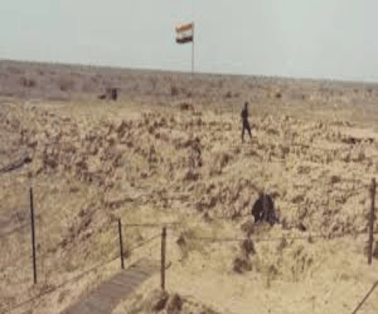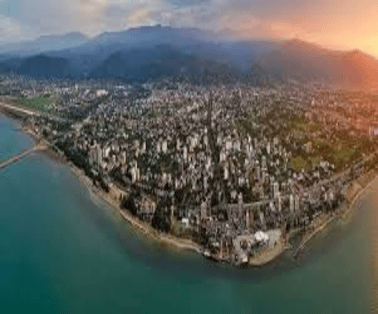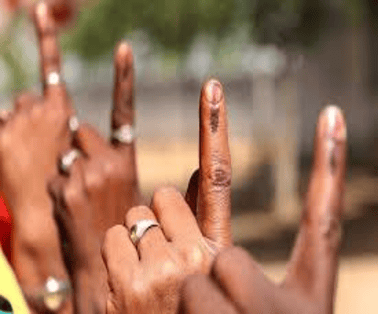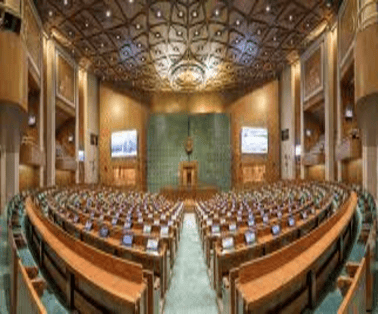India’s journey into the elite group of nuclear-armed nations began with the Pokhran nuclear test, code-named Operation Smiling Buddha, conducted on May 18, 1974. This test, carried out in the deserts of Rajasthan, marked a pivotal moment in India’s strategic and scientific history, establishing its credibility on the global stage.
Key Highlights of the Pokhran Nuclear Test
- Led by Dr H.N. Sethna and Dr R. Ramanna, the test yielded successful results in the 10-15 kiloton range.
- This made India the first nation, apart from the five permanent members of the UN Security Council, to conduct such a test.
- In 1998, India conducted a series of nuclear tests, code-named Operation Shakti, again in Pokhran, expanding its nuclear capabilities.
- These tests enabled India to build nuclear weapons with yields up to around 200 kilotons.
- India’s nuclear doctrine emphasizes building a credible minimum deterrent, adhering to a “No First Use” policy, and maintaining civilian political control over nuclear retaliation.
Origins of India’s Nuclear Programme
- India’s nuclear programme can be traced to the work of physicist Homi J Bhaba.
- In 1945, after Bhaba’s successful lobbying of India’s biggest industrial family, the Tata Institute of Fundamental Research was opened in Bombay.
- TIFR was India’s first research institution dedicated to the study of nuclear physics.
- Post independence, Bhaba repeatedly met and convinced Prime Minister Jawaharlal Nehru about the importance of nuclear energy and the need for India to allocate resources for its development.
- Thus, in 1954, the Department of Atomic Energy (DAE) was founded, with Bhabha as director.
- While Nehru publicly opposed nuclear weapons, privately, he had given Bhaba a free hand to lay foundations for both civilian and military uses of nuclear technology.
Strategic Threats from China and Pakistan
- A pivotal moment in India’s nuclear journey came after it suffered a crushing defeat in the 1962 Sino-Indian War and China’s subsequent nuclear bomb test at Lop Nor in 1964.
- While new Prime Minister Lal Bahadur Shastri first tried to attain nuclear guarantees from established nuclear weapons states, when such guarantees did not emerge, a different route had to be taken.
- Things were further accelerated, when in 1965, India went to war with Pakistan once again, with China openly supporting Pakistan this time.
- Effectively, India was surrounded by two unfriendly nations, and needed to take steps towards building self-sufficiency.
India’s Stance on the NPT
- After China successfully tested its own bomb, there was increasing international consensus among the big powers regarding the need for a non-proliferation treaty.
- In 1968, the Non-Proliferation Treaty (NPT) came into existence.
- The treaty defines nuclear-weapon states as those that have built and tested a nuclear explosive device before January 1, 1967 – the US, Russia (formerly USSR), the UK, France and China
- And effectively disallows any other state from acquiring nuclear weapons. While the treaty has been signed by almost every country in the world, India is one of the few non-signatories.
Pokhran-I: Operation Smiling Buddha (1974)
- By the 1970s, India was capable of conducting a nuclear bomb test.
- On May 18, 1974, with support from Indira, India carried out its first nuclear test at the Pokhran test site.
- Pokhran-I, codenamed Operation Smiling Buddha, would be billed as a “peaceful nuclear explosion”, with “few military implications”.
- However, the world was not willing to buy India’s version of the story. There was near-universal condemnation and countries like the US and Canada imposed significant international sanctions on India.
- These sanctions would be a major setback for India’s nuclear journey, and majorly decelerate its progress.
The Gap Between Pokhran-I and Pokhran-II
- The Emergency of 1975 and Prime Minister Morarji Desai’s opposition to nuclear weapons brought the programme to a grinding halt.
- In 1983, the Defence Research and Development Organisation’s (DRDO) funding was increased and Dr APJ Abdul Kalam was put in charge of India’s missile programme.
- Furthermore, throughout the decade, India exponentially increased its plutonium stockpiles.
- With the fall of the USSR in 1991, India lost one of its biggest military allies.
- Furthermore, the US continued to provide military aid to Pakistan despite its own misgivings with its nuclear weapons programme.
- Finally, discussions regarding a Comprehensive Test Ban Treaty (CTBT) were also underway in the UN (it would be finalised in 1996, India did not sign it).
- For India, it felt like its window of opportunity was fast closing. Thus, in 1995, then Prime Minister PV Narasimha Rao permitted the preparations for carrying out a nuclear test
Pokhran-II: Operation Shakti (1998)
- After a few years of domestic turmoil when the political will to conduct nuclear testing was wanting, in 1998, the National Democratic Alliance (NDA) led by the BJP came to power under the leadership of Atal Bihari Vajpayee.
- One of the key promises in its manifesto was to “induct nuclear weapons” into India’s arsenal.
- In March 1998, Pakistan launched the Ghauri missile – built with assistance from China. Two months later, India responded with Pokhran- II
- Pokhran-II refers to a sequence of five nuclear bomb test explosions conducted by India on between 11-13th May 1998 at Rajasthan’s Pokhran desert.
- While the 1974 tests were ostensibly done for peaceful purposes, the 1998 tests were the culmination of India’s nuclear weaponisation process.
- Consequently, the Indian Government declared itself as a state possessing nuclear weapons following Pokhran-II.
- While the tests in 1998 also invited sanctions from some countries (like the US), the condemnation was far from universal like in 1974.
- In context of India’s fast-growing economy and market potential, India was able to stand its ground and thus cement its status as a dominant nation state.
Current Status of India’s Nuclear Program
- India currently possesses approximately 160 nuclear warheads, according to the Federation of American Scientists (FAS).
- India has achieved an operational nuclear triad capability, allowing for the launch of nuclear weapons from land, air, and sea.
- The triad delivery systems include Agni, Prithvi, and K series ballistic missiles, fighter aircraft, and nuclear submarines.
Pokhran
- Pokhran is a small town located in the Jaisalmer district of Rajasthan, India.
- The town is located in the Thar Desert, which is the seventh-largest desert in the world and spans parts of India and Pakistan.
- The area around Pokhran has been inhabited since ancient times and is home to several archaeological sites and temples dating back to the 8th century AD.
- In addition to its nuclear tests, Pokhran is also known for its proximity to the Pokhran Fort, which was built in the 14th century and is a popular tourist attraction in the region.
- The area around Pokhran is known for its unique flora and fauna, including several species of desert plants and animals such as chinkara, desert fox, and sandgrouse
Conclusion
The Pokhran nuclear test was a watershed moment in India’s strategic history. From Operation Smiling Buddha in 1974 to Operation Shakti in 1998, India’s nuclear programme evolved in response to regional threats, global dynamics, and national aspirations. Today, India’s nuclear policy continues to be guided by restraint, responsibility, and readiness.
To Download Monthly Current Affairs PDF Click here
Click here to get a free demo
Discover all about CLAT Exam



